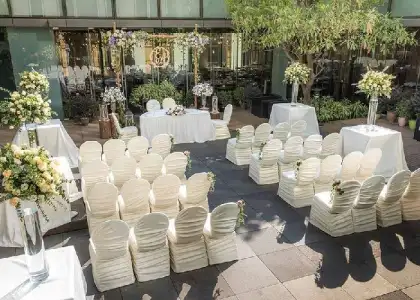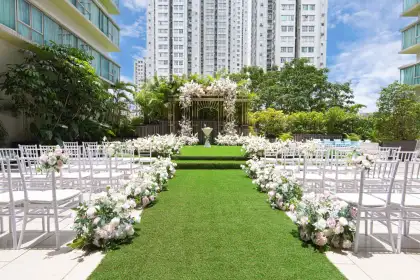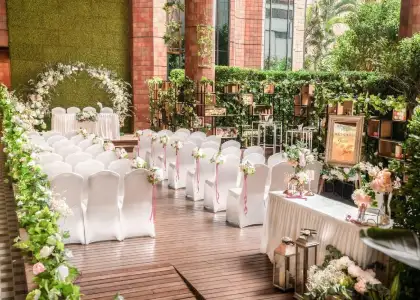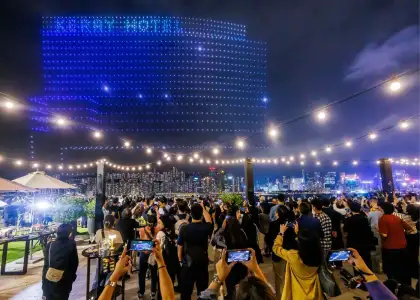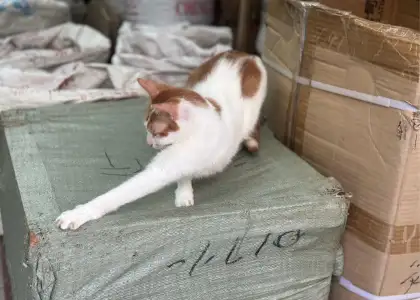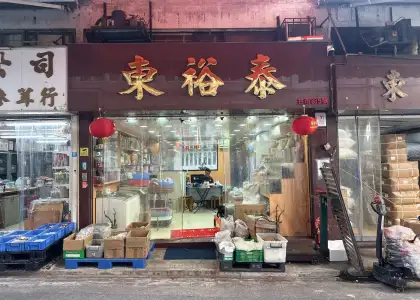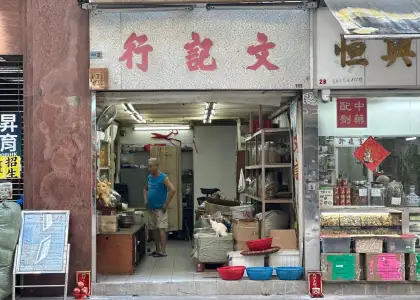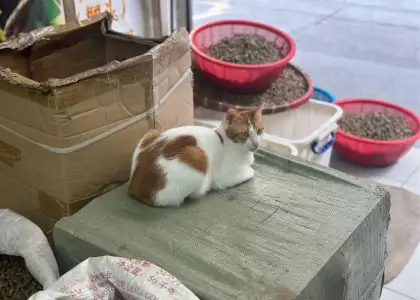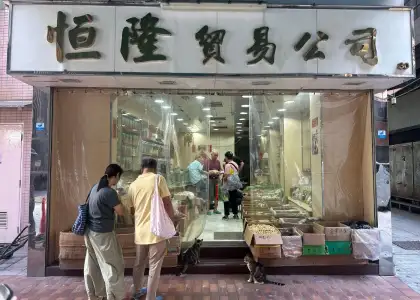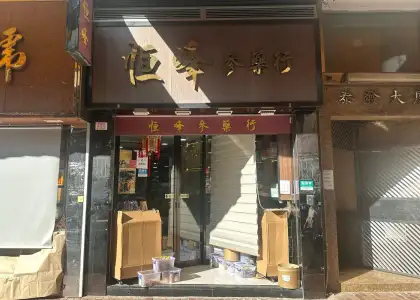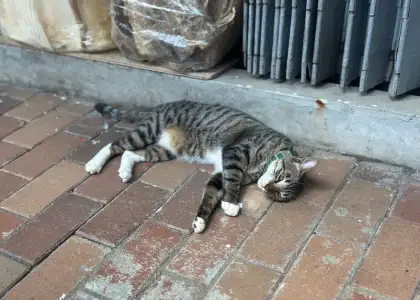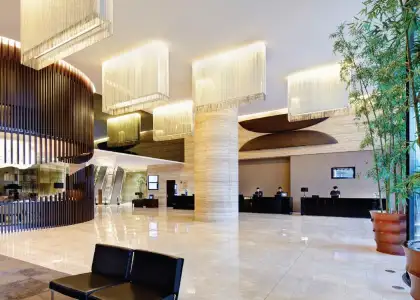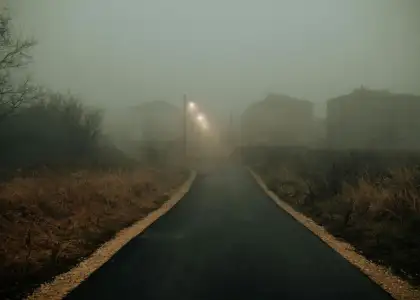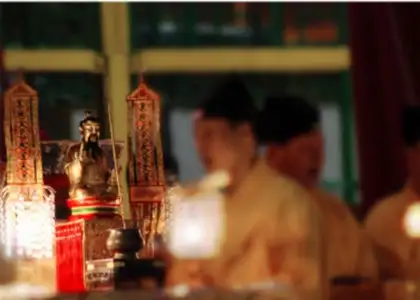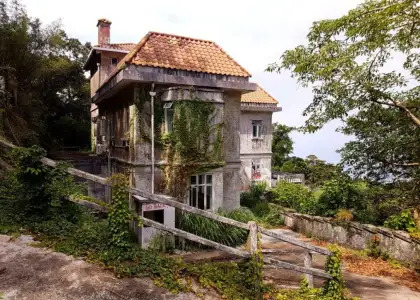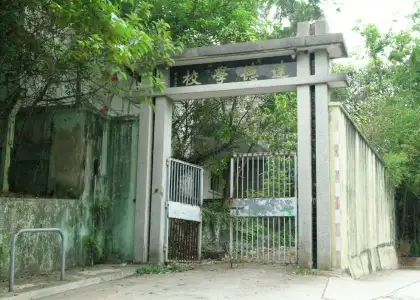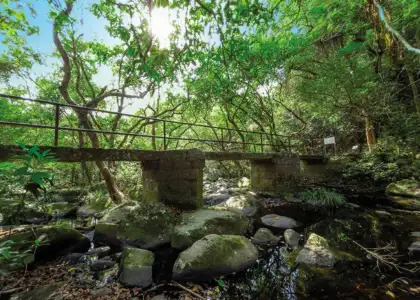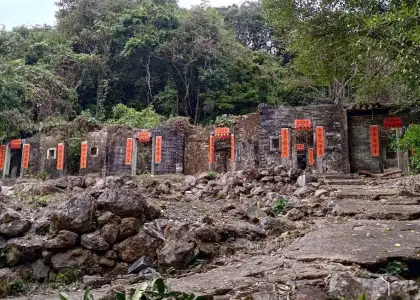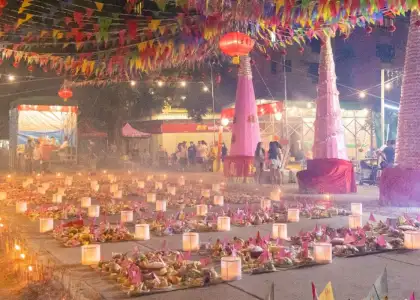The Spooky High Street Haunted House in Sai Ying Pun, a Former Japanese Killing Site and Ghost Hangout
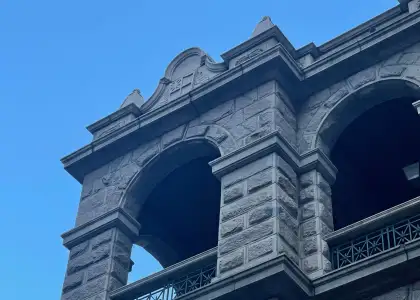
Hong Kong’s most terrifying place is located in Sai Ying Pun, a neighbourhood enriched with a colonial history, but less well known for the city’s once largest mental health hospital that stood there and the reported mass killing site by the Japanese.
Today’s Sai Ying Pun Community Complex, a multi-storied building housing local services and government-funded public groups, was once the site for housing Hong Kong’s mentally ill.
After the Japanese reportedly used the site to kill freedom-seekers and objectors against the military state and a spate of ghost sightings, the centre got its sad name as the “High Street Haunted House.”
The High Street Haunted House is located on High Street, the fourth east to west horizonal side streets that splice up Sai Ying Pun, intersecting the arterial Centre Street that stretches from the beginning of the neighbourhood to Bonham Road.
High Street has housed the haunted house-cum-community complex in Sai Ying Pun since 2001, existing for 129 years, on what was once called fourth street, changed by the government in the early 1900s to cut any connotations with death (the phonetic sound for four in Cantonese is similar with death).

The Haunted House once began as Hong Kong’s Old Mental Hospital, the first and largest facility treating mentally-ill patients under British rule before the turn of the century.
Designed by Leigh and Orange Architectures, the site was used as quarters for the nursing staff, emigrating from Europe, who began work at once Hong Kong’s largest medical centre, the Government Civil Hospital.
The original structure of the building contained only 10 bedrooms for nurses, a matron office, a laboratory, 12 quarters for working local Hong Kong servants, and other living facilities.
In 1895, under British colonial rule, the local Chinese Lunatic Asylum and European Lunatic Asylum in Sai Ying Pun were linked as an extension of the Hospital. The extension and increase in patient load saw the centres become overcrowded and understaffed dealing with the asylum and mentally ill patients.
To alleviate stress on the city, the nurses’ quarters were converted into a 23-bed hospital for mentally ill female patients, increasing to 84 beds in 1905.
The primary function of the centre, known as the Victoria Mental Hospital with the three quarters and facilities, was to house and treat patients sent from China or en route to be deported back to their own countries.

During World War 2, the mental hospital was taken over by the Japanese occupation, purportedly utilised as an execution hall for prisoners of war and civilians who posed a threat to the four-year-long occupation.
The rumours include that the opposite King George’s Park was used as a mass grave site for the bodies killed within the chambers of the then-mental asylum.
Following the fall of the Japanese in 1945, the mental hospital resumed services treating Hong Kong’s sick until the current Castle Peak Mental Hospital its doors in 1961, paving the way for greater space and more modern practices to treat the mentallyy -ill in Hong Kong.
The complex served as a day treatment centre in Sai Ying Pun for psychiatric out-patients until 1971 when the mental hospital closed its doors for the final time.
After the vacancy of the colonial-British-built mental facility, the building remained empty for 20 years and fell into a state of disrepair and ruin. Urban explorers and drug addicts who frequented the nearby methadone clinic in Sai Ying Pun would regularly sneak into the premises to loiter and take drugs. Two fires, believed to be started by trespassers on the site, further led to the destruction of the colonial building.
In the late 1990s, discussions begun to consider renovation of the historic site and repurpose the building for a community centre for the neighbourhood.

In its prime, the original structure employed distinct styles from Western and Chinese architectural practices. The structure held a traditional Chinese- tiled roof, paired with contrasting green window frames set in rustic granite, a style a la a Mediterranean structure that is kept today.
The rustic granite façade, with the arched veranda, stands out amongst the modern and rising apartment buildings that choke Sai Ying Pun. A one of a kind in Hong Kong, the interior was left in a poor condition in vacancy. With the roof collapsed, the government decided to preserve just the façade rather than the entire structure.
The building was the only specimen of its kind in Hong Kong, but the interior was in a very bad condition after being left vacant for so long. Fire had destroyed much of it and the roof had collapsed. Although it would be ideal to preserve the whole building, a compromise had to be reached. Given its physical condition, it would have been very costly to restore the whole building, so a decision was reached to preserve the facade.

In 1998, the Sai Ying Pun Community Centre opened to public use for a variety of purposes, housing physical and mental health facilities, elderly residences, local charities, and student services. Today, the façade remains, with a larger modern grey structure built behind it.
In October 2015, the government-run Antiques Authority declared the former mental hospital as a monument, protecting the site from future development.
When the centre opened its doors in 2001, local Sai Ying Pun residents were originally reticent of the opening and wary of its history. The association with Hong Kong’s dark war times and mental illness coverage shone a dark shadow on the former mental health facility.
Residents in the neighbourhood, one of Hong Kong’s oldest, began to report sightings of ghosts in the complex, possibly the maimed prisoners during the Japanese occupation or suicided mental patients, leading to the nickname of the High Street Ghost House.
Reports were passed onto local news about headless ghost visitors passing through the corridors of the complex and visitors loitering in the veranda.

However, the High Street Haunted House is no stranger to real-life, modern death. In February 2019, the community complex saw the death of a 50-year-old night shift security guard on his first night of work at the former mental hospital.
The security guard began work at 11 PM the night prior to his death and patrolled the permitter and floors until 1 AM where he fell unconscious in a passageway in the building. He was found at 9:30 AM by a colleague, with medication treating his heart disease on his person.
Pronounced dead at the scene, he had suffered from asthma and a heart condition according to a post-mortem and family records.
Beyond this death, much is still a mystery of Sai Ying Pun’s haunted community complex. One thing is for sure, don’t go there at night!
Subscribe to The Beat's newsletter to receive compelling, curated content straight to your inbox! You can also create an account with us for free to start bookmarking articles for later reading.













